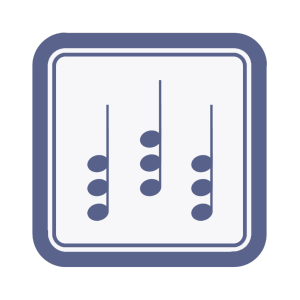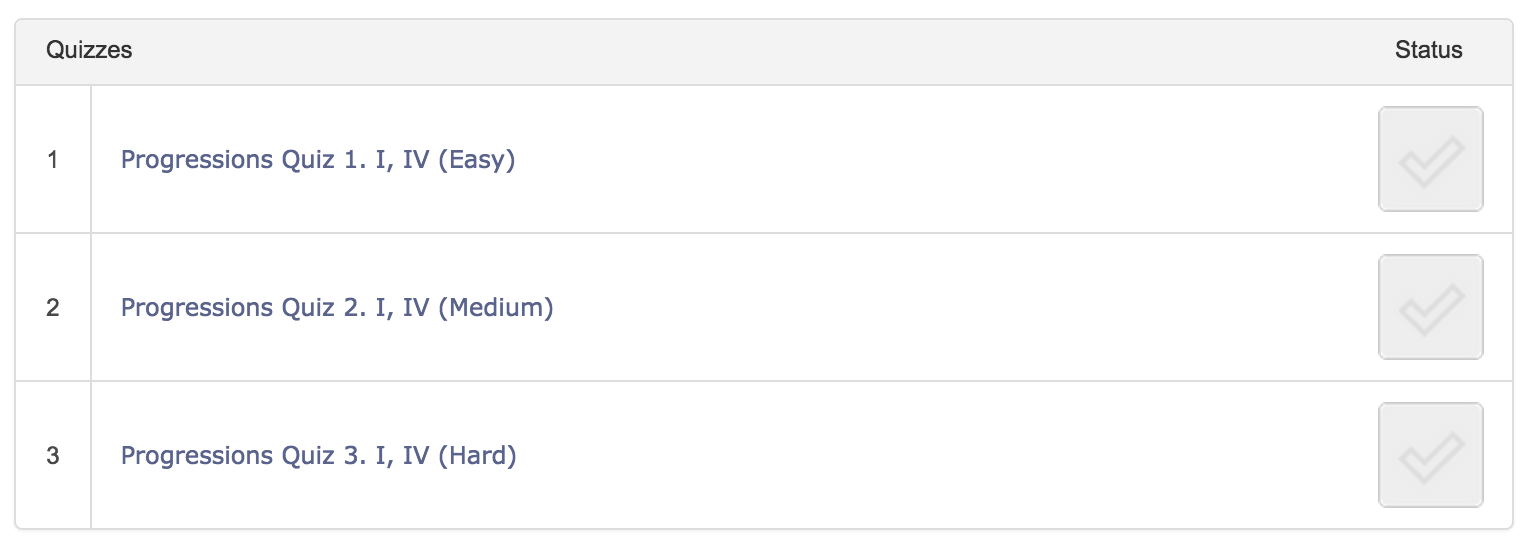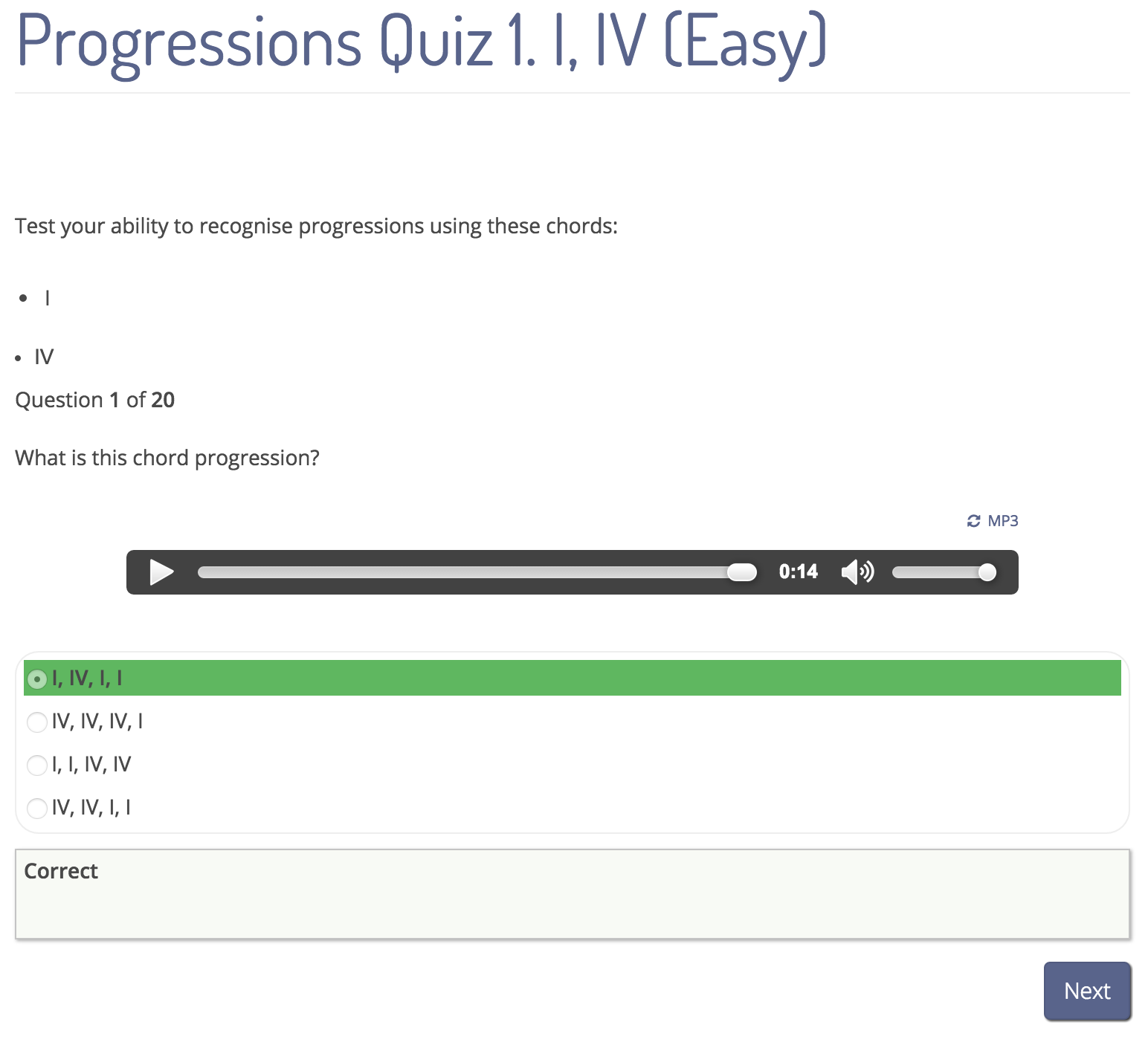
Chord Progression Recognition
Practice recognising the most common chord progressions by ear.
After completing this module: you will be able to reliably recognise the I, IV, V and vi chords in progressions.
This module has a sequence of lessons with which you will gradually learn to recognise progressions using the four most common chords. The lessons start simple and become progressively harder, and the sequence should work well for most people. However, every musician learns differently and so you should feel free to change the order based on your progress.
Peek Inside
Module Preview
Contents
- Introduction
- The I and IV chords
- The I and V7 chords
- I, IV and V7
- I, IV and V
- Adding the vi
How It Works
In each lesson you’ll find some information about the types of chord you’re learning, then some training tracks, some testing tracks, and a set of quizzes.
The exercises come with three difficulty levels:
- The “easy” exercise uses just root-position triad chords, making it easy to hear the movement of the root up to the fourth, fifth, and sixth degrees of the scale.
- The “medium” exercise introduces different inversions of the chords, which means the notes can change without it actually changing chord in the progression.
- The “hard” exercise doesn’t play a scale before the progression so you have an extra challenge!
We recommend practising with each difficulty level in order for the exercises, building up a robust ability to recognise those progressions in varied musical use.
The exercises are provided in a sequence which builds up your knowledge gradually, and uses the distinctive V7 chord as a stepping-stone to recognising the plain V chord.
Step 1: Train
Use the “Training” tracks to listen carefully to examples of progressions and tune your ear in to the sound of each chord.
Each time a progression is played, it is then announced so you know which chords you’re hearing.
Step 2: Test
Once you think you’re getting a sense of the chords, listen to the corresponding “Test” tracks, which include a short pause after each progression.
During the pause, try to identify the chords you just heard.
You’ll hear the correct answer so you know if you got it right and have the chance to hear the progression again.
Step 3: Quiz
If you’re getting the answers right while listening to the “Testing” tracks, it’s time to check your abilities by taking the corresponding quiz.
Example Lesson: The I and IV chords
We’ll start off with just two chords: the I and IV.
The I chord is also referred to as the “tonic” chord. This chord will usually let you know what key a song is written in. Because the I chord matches the key, it is the most important of all the chords in that key, and the other chords used will all have a sound based on their relation to the I chord.
The I chord is what sparks the beginning of the song and is also what the song usually comes back to at the end, in a cycle.
The IV chord will be the major chord based on the fourth note (or “degree”) of the key’s scale.
Because the tonic note of the I chord is one of the notes in the IV chord, it makes it very easy to go from IV to I or I to IV seamlessly in music. Having this note in common links the sound of the two chords.
Training Tracks
Training 1. Easy
Training 2. Medium
Training 3. Hard
Testing Tracks
Test 1. Easy
Test 2. Medium
Test 3. Hard
Quizzes
Member Success
Before I tried to figure out note by note with a trial and error approach. Now I first figure out the key of the song then I tried to play IV and V chords until sound right and it was quick. Recognising the chord progressions makes all the difference!”



